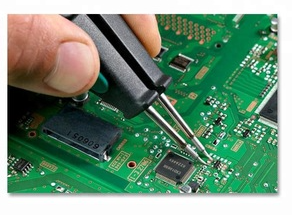Fourteen important features of PCB, PCB circuit boards are almost the same on the surface regardless of their internal quality.
It is through the surface that we see the differences, and these differences are critical to the durability and function of the PCB circuit board throughout its life.
Whether in the manufacturing assembly process or in actual use, PCB circuit boards must have reliable performance, which is very important.
In addition to related costs, defects in the assembly process may be brought into the final product by the PCB circuit board, and failures may occur during actual use, leading to claims.
Therefore, from this point of view, it is no exaggeration to say that the cost of a high-quality PCB circuit board is negligible.
In all market segments, especially the markets that produce products in key application areas, the consequences of such failures are unimaginable.

When comparing PCB prices, these aspects should be kept in mind. Although the initial cost of reliable, guaranteed, and long-life products is high, they are still worth the money in the long run.
Let’s take a look at the 14 most important features of high-reliability PCB circuit boards:
1, 25 micron hole wall copper thickness benefits: enhanced reliability, including improved z-axis expansion resistance.
The risk of not doing this: blow holes or outgassing, electrical connectivity problems during assembly (inner layer separation, hole wall breakage), or failure under load conditions during actual use. IPCClass2 (the standard adopted by most factories) requires 20% less copper plating.
2. No welding repair or open circuit repair. Benefits: A perfect circuit can ensure reliability and safety, no maintenance and no risk.
The risk of not doing this: If the repair is not done properly, it will cause the circuit board to break. Even if the repair is ‘proper’, there is a risk of failure under load conditions (vibration, etc.), which may cause failure in actual use.
3. Cleanliness requirements beyond IPC specifications Benefits: Improve PCB cleanliness to improve reliability.
Risks of not doing so: Residues and solder accumulation on the circuit board bring risks to the solder mask. Ionic residues can cause corrosion and contamination risks on the soldering surface, which may lead to reliability problems (bad solder joints/electrical failures), and Eventually increase the probability of actual failure.
4. Use internationally renowned substrates-do not use "local" or unknown brands Benefits: Improve reliability and known performance
Risk of not doing this: Poor mechanical performance means that the circuit board cannot perform the expected performance under assembly conditions, for example: high expansion performance will cause delamination, disconnection and warpage problems. Weakened electrical characteristics can lead to poor impedance performance.
5. Strictly control the service life of each surface treatment. Benefits: solderability, reliability, and reduce the risk of moisture intrusion
The risk of not doing this: due to the metallographic changes in the surface treatment of the old circuit boards, soldering problems may occur, and moisture intrusion may cause delamination, inner layers and holes in the PCB assembly process and/or actual use Wall separation (open circuit) and other issues.